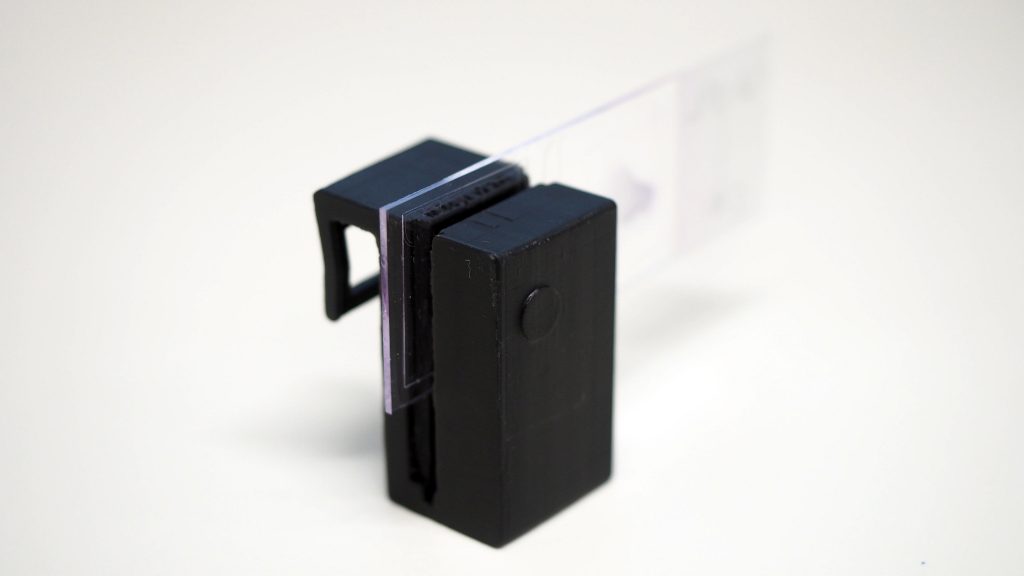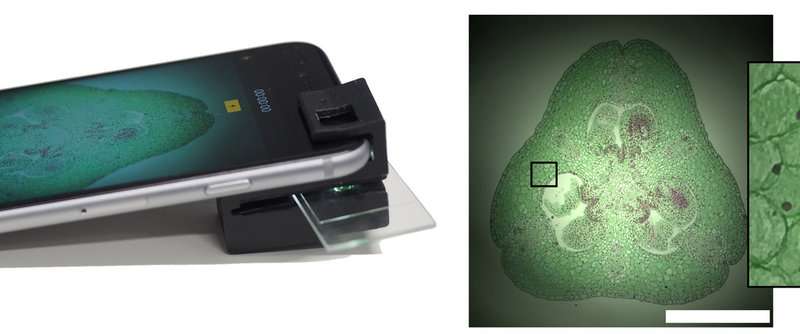Looking for a smartphone upgrade? Look no further than your 3D printer.
RMIT University scientists have developed a “clip-on” filter that can turn smartphone cameras into a powerful microscope. Capable of viewing specimens as small as 1/200th of a millimeter, the device will come in handy as a point of care diagnostic tool or research device, for remote healthcare clinics and field research groups.
Instead of using an external light source, the handy device is also capable of harnessing the phone’s built-in flash to illuminate discoveries.
“Our mobile microscope can be used as an inexpensive and portable tool for all types of on-site or remote area monitoring,” explains RMIT lead developer Dr. Antony Orth.
“Water quality, blood samples, environmental observation, early disease detection and diagnosis—these are all areas where our technology can be easily used to good effect.”

Innovation in Australia
Dr. Orth and the team behind the 3D printable microscope attachment work at the RMIT module of the ARC Centre of Excellence for Nanoscale BioPhotonics (CNBP) – a $40 million AUD government initiative, bringing together a number of universities and companies from across Australia to develop new imaging technologies.
Working on the project with Dr. Orth were RMIT researchers E. R. Wilson and B. C. Gibson, and J. G. Thompson from the University of Adelaide.
Opensource science
The concept of Orth, Wilson, Gibson & Thompson’s project was to streamline the bulky equipment associated with conventional microscopes, and make it available to as many people as possible.
The team also wanted to overcome the challenges of other 3D printed mobile microscope attachments that typically require external lighting to work.
What the CNBP group have made is a simple, single-piece clip device with channels designed to redirect light from the phone’s flashlight. It can be attached to the back and sides of an iPhone 6, and fitted with a sample slide for viewing.
By making the .stl files of the device available to download for free online, the team have ensured that anyone, provided access to a FFF 3D printer, can make their own microscope clip remotely.

Microscopy for everybody
In test experiments, the team have used the clip-on setup to examine live cell cultures, zooplankton, and live cattle semen, demonstrating an ability to perform both dark-field (on a dark substrate) and light-field microscopy. These will be useful in helping clinicians and other field researchers to identify and diagnose microbial conditions such as malaria and parasites.
In the future, the model could be developed to fit on all commerically available mobile phones, as Dr. Orth explains, “Ideally, a phone microscope should take advantage of the integrated flash found in nearly every modern mobile, avoiding the need for external lighting and power,”
“It should also be as compact and easy to assemble as possible. It is this design philosophy that inspired us in the development of this add-on clip.”
A paper reporting the findings of the CNBP’s group’s research titled “A dual-mode mobile phone microscope using the onboard camera flash and ambient light” can be read online in Scientific Reports.

Would you like to see CNBP researchers commended for their efforts in 3D printing? Nominate the research team of the year now in the 2018 3D Printing Industry Awards now.
Protolabs is sponsoring the 2018 3D Printing Industry Awards design competition. Want to design this year’s trophy? Submit your entries now.
To stay up to date with research progress subscribe to the 3D Printing Industry newsletter, follow us on Twitter, and like us on Facebook.
Featured image shows an iPhone 6 fitted with the CNBP developed clip-on microscope. Photo via RMIT



